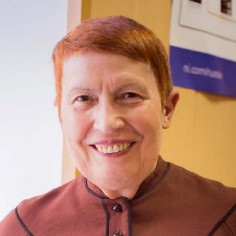75 Years of the Casimir Effect: Advances and Prospects
A special issue of Physics (ISSN 2624-8174). This special issue belongs to the section "High Energy Physics".
Deadline for manuscript submissions: closed (30 November 2023) | Viewed by 15446
Special Issue Editors
2. Peter the Great Saint Petersburg Polytechnic University, 195251 Saint Petersburg, Russia
Interests: astrophysics; atomic physics; condensed matter physics
Special Issues, Collections and Topics in MDPI journals
2. Peter the Great Saint Petersburg Polytechnic University, 195251 Saint Petersburg, Russia
Interests: astrophysics; cosmology; quantum field theory
Special Issues, Collections and Topics in MDPI journals
Special Issue Information
Dear Colleagues,
This Special Issue is devoted to the advances in and prospects of the Casimir effect, which was predicted by Hendrik Brugt Gerhard Casimir seventy-five years ago and is being intensively studied both experimentally and theoretically at the present time. The multidisciplinary character of the Casimir effect is caused by the fact that it is determined by the zero-point and thermal fluctuations of quantized fields, which play an important role in any physical system. Modern discussions deal with concepts such as the Casimir force, the Casimir torque, Casimir energy and free energy, the Casimir entropy, non-equilibrium Casimir and Casimir–Polder forces, etc. These concepts are used in quantum field theory, condensed matter physics, nanotechnology, atomic physics, physics of elementary particles, and in gravitation and cosmology. Experiments that measure the Casimir force have already covered a wide class of physical systems, ranging from metallic, dielectric and semiconductor test bodies to nanostructured devices, metamaterials, and 2D materials, including graphene. Despite the great achievements in this field, the Lifshitz theory of Casimir forces, which was proposed by Evgeny Mikhailovich Lifshitz in 1954, has long suffered from unresolved problems. These problems arise when describing the electromagnetic response of different materials to low-frequency electromagnetic fields by using simple partially phenomenological models.
Both research and review articles on all theoretical and experimental aspects of the Casimir effect, including a discussion of unresolved problems, are welcome for submission.
Prof. Dr. Galina L. Klimchitskaya
Prof. Dr. Vladimir M. Mostepanenko
Guest Editors
Manuscript Submission Information
Manuscripts should be submitted online at www.mdpi.com by registering and logging in to this website. Once you are registered, click here to go to the submission form. Manuscripts can be submitted until the deadline. All submissions that pass pre-check are peer-reviewed. Accepted papers will be published continuously in the journal (as soon as accepted) and will be listed together on the special issue website. Research articles, review articles as well as short communications are invited. For planned papers, a title and short abstract (about 100 words) can be sent to the Editorial Office for announcement on this website.
Submitted manuscripts should not have been published previously, nor be under consideration for publication elsewhere (except conference proceedings papers). All manuscripts are thoroughly refereed through a single-blind peer-review process. A guide for authors and other relevant information for submission of manuscripts is available on the Instructions for Authors page. Physics is an international peer-reviewed open access quarterly journal published by MDPI.
Please visit the Instructions for Authors page before submitting a manuscript. The Article Processing Charge (APC) for publication in this open access journal is 1400 CHF (Swiss Francs). Submitted papers should be well formatted and use good English. Authors may use MDPI's English editing service prior to publication or during author revisions.
Keywords
- Casimir force
- Casimir torque
- Casimir energy and free energy
- Casimir entropy
- Casimir–Polder force
- Lifshitz theory
- non-equilibrium Casimir and Casimir–Polder forces
- Drude model
- plasma model
- non-local effects
- metamaterials
- measurements of the Casimir interaction






